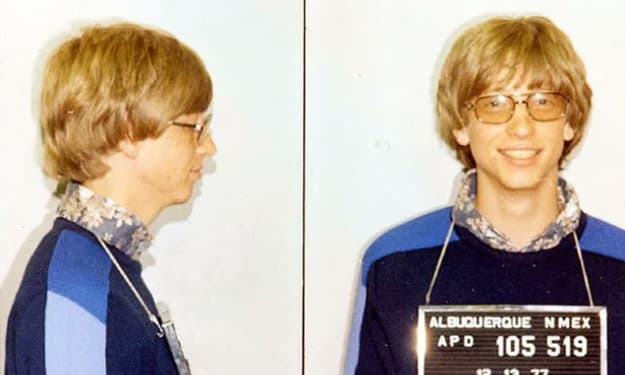Idaho College Murder House Demolished After Tragic Student Deaths
Victim Families and Community Have Mixed Reactions

Have you ever wondered what happens to a house where a tragic event occurs? Especially when that event involves the loss of innocent lives? In the case of the Moscow, Idaho house where four University of Idaho students were brutally murdered, the answer is now known: it was demolished. But why? What prompted the decision to tear down the very structure that witnessed such a horrifying crime? And how does this act contribute to the healing process of the community? Let’s explore the reasons behind this controversial move and delve into its impact on the future of a scarred community.
Remains of Murder House Torn Down Despite Mixed Feelings
The demolition of the Moscow, Idaho home where four students tragically lost their lives has been carried out despite generating mixed feelings among the community. To minimize disruption for students living in the area, the demolition occurred during winter break, completing the task in under two hours. Heavy equipment was utilized to swiftly tear down the three-story house and remove the debris.
Although some expressed concerns about the potential loss of evidentiary value, university officials maintain that the demolition is an integral part of the healing process for the community. By removing the physical structure where the crime occurred, they aim to prevent further sensationalization and allow all those affected to begin moving forward.
Details of the Tragic Crime and Investigation
The tragedy unfolded on November 13, 2022, in the three-story house at 1122 King Road, Moscow, Idaho. Four University of Idaho students, Kaylee Goncalves, Madison Mogen, Xana Kernodle, and Ethan Chapin, were brutally stabbed to death on the second and third floors of the house.
The horrifying incident took place between 4 and 4:25 a.m., according to the probable cause affidavit. The students’ lives were tragically cut short, leaving their families and the entire community devastated by the senseless act of violence.
The investigation into the crime scene uncovered critical evidence linking Bryan Kohberger, a Ph.D. student in criminology, to the murders. DNA evidence, surveillance footage, and cell phone pings played a crucial role in connecting Kohberger to the house where the heinous crimes occurred.
The trial against Kohberger is still pending, as the legal proceedings are yet to be concluded. The details and evidence presented during the trial will shed more light on the tragic event and hopefully bring a sense of justice for the victims and their loved ones.
University’s Decision to Demolish and Creating a Healing Garden
The University of Idaho has made the decision to demolish the house where the tragic incident occurred, prioritizing the healing and well-being of the community. Recognizing the need for closure and a fresh start, the university is seeking to take concrete steps to create and foster healing and remembrance.
As part of this commitment, the university has announced plans to develop a beautiful healing garden and memorial on campus. This serene and tranquil space will serve as a dedicated tribute to not only the four students who lost their lives in the Idaho house tragedy but also to all the students from the university who have passed away.
The healing garden will be a place for reflection, solace, and remembrance. It will provide a comforting environment for the community to gather, pay their respects, and find solace amid their grief. The garden will incorporate elements of nature, including lush greenery, flowers, and serene seating areas, offering a sense of peace and tranquility. The memorial will feature plaques with the victims’ names, serving as a permanent reminder of their lives and their impact on the university community.
The Universities thought is that This poignant tribute will ensure that the memories of the victims endure while also providing a space for ongoing healing and support for the entire community. It is a testament to the university’s commitment to honoring and cherishing the lives lost and creating a meaningful legacy for future generations to remember and learn from.
As the demolition progresses and the healing garden takes shape, the community can look forward to a place of solace and reflection where they can come together to remember, heal, and find strength in unity.
Emotional Connections and Mixed Reactions from Families
While the demolition of the Idaho house where four students were tragically murdered was seen as a necessary step for the healing of the university and the community, it was not without its share of emotional connections and mixed reactions from the families of the victims.
Some family members opposed the demolition, citing potential evidentiary value that could be lost. The Goncalves family, in particular, believed that the house held critical evidence that could be important for the upcoming trial. They were concerned that the destruction of the house would hinder the pursuit of justice and the uncovering of any possible additional information.
On the other hand, the Chapin family, whose son was one of the victims, supported the decision to demolish the house. They viewed the demolition as a necessary step in the healing process for the university and the community. Removing the physical structure where the tragic event occurred, they believed, would help prevent further sensationalization and allow everyone to move forward.
Trial Delay and Prosecution’s Intent for Death Penalty
The trial against Bryan Kohberger, the suspect in the murders of four University of Idaho students, has been delayed indefinitely as he waived his right to a speedy trial. Kohberger, a former criminology Ph.D. student, is currently awaiting trial for the tragic deaths that occurred in the Idaho house.
Prosecutors have made the decision to seek the death penalty against Kohberger for his alleged involvement in the ruthless killings. This decision reflects the severity of the crime and the immense loss that the community experienced.
While the trial may be postponed, the victims and their families continue to be at the forefront of everyone’s thoughts. The trial’s outcome will be crucial in bringing closure to the community and ensuring that justice is served for the lives lost in this tragic incident.
Impact on Community Healing
The demolition of the house where four students were tragically killed has significant implications for the healing process within the community. In addition to University officials, local authorities also firmly believe that removing the physical structure where the crime occurred is one of the necessary steps towards preventing further sensationalization and aiding in the healing process.
The decision is being seen as a commitment to move forward and foster an environment that allows the community to heal and rebuild.
Access to the House for Investigation Purposes
During the ongoing investigation into the tragic deaths of the four University of Idaho students in the Idaho house, both the prosecution and defense teams were granted access to the crime scene. They meticulously gathered crucial evidence, taking photographs and measurements and potentially even utilizing drone footage to aid their inquiries.
Given the gravity of the case, it is of utmost importance that no stone is left unturned. The teams involved understood the significance of thoroughly investigating the house to present a comprehensive case before the court.
Neither side requested the house to be preserved or retained, indicating their confidence in possessing all the evidence required for the trial. This suggests that the investigative teams have conducted a thorough and exhaustive search, giving them the confidence to proceed without further access.
Plans for Future Development of the Property
The University of Idaho is currently evaluating options for the future development of the property where the tragic incident occurred. While the house has been demolished, there is a strong desire to transform the space into something positive that will benefit the university and its students.
One of the primary considerations in the planning process is to involve students in developing the area. The university believes that active student participation will ensure their engagement and provide valuable insight and ideas for the use of the space.
By involving students, the university aims to create an environment that meets their needs and fosters a sense of belonging. This collaborative approach to development will also help honor the victims’ memory and emphasize the importance of community healing and growth.
While specific plans have yet to be finalized, the university is considering various options, such as creating a memorial park, a student center, or a space for community events. The exact nature of the development will be determined through a thoughtful and inclusive process incorporating input from students, faculty, and community members.
Looking Towards the Future
The demolition of the Idaho house where four students were tragically killed marks the closure of a chapter in the events that took place in the house. While the emotional connection to the house remains for some, the focus now shifts towards healing, remembering the victims, and rebuilding the community.
The University of Idaho is committed to honoring the memory of the victims and creating a healing garden that will serve as a place of remembrance and reflection. This garden will provide a space for the community to come together, find solace, and support one another in the aftermath of this tragedy. The university aims to foster healing and resilience in adversity through this commitment.
Looking toward the future, the university recognizes the importance of implementing safety precautions and preventive measures to ensure the well-being of its students. The incident in the Idaho house has prompted a thorough investigation and evaluation of security protocols to prevent similar tragedies from occurring in the future.
The Idaho house demolition serves as a somber reminder of the need for vigilance in maintaining the safety of our educational environments. Universities nationwide are taking proactive steps to strengthen their security measures and support their student’s mental health and well-being.
Together, as a community, we can work towards creating a safer and more nurturing environment where students can pursue their education without fear. By learning from this tragedy and implementing necessary changes, we honor the memory of the victims and demonstrate our commitment to fostering a campus culture focused on safety, support, and resilience.
Conclusion
The demolition of the Idaho house where four students were tragically killed marks an essential step in honoring the victims and supporting the healing process of the community. Despite some mixed feelings, the decision to demolish the house was made to prevent further sensationalization and allow the community to move forward.
By removing the physical structure where the tragic incident occurred, the University of Idaho and the local community aim to eliminate the constant reminder of the past and create a fresh beginning. The demolition also paves the way for the university’s plans to establish a healing garden and memorial on campus, a space dedicated to remembering the victims and fostering healing within the community.
The future development of the property, where the house once stood, is currently under evaluation. The university seeks to involve students in transforming the space into something positive, ensuring their engagement and contribution to its meaningful use.
Wish to continue your study of this true crime case? Consider the book linked below. (Please note that this is an affiliate link. If you make a purchase I will receive a small commission at no additional expense to you).
About the Creator
Matthew Jack
My 30-year law enforcement career fuels my interest in true crime writing. My writing extends my investigative mindset, offers comprehensive case overviews, and invites you, my readers, to engage in pursuing truth and resolution.






Comments
There are no comments for this story
Be the first to respond and start the conversation.